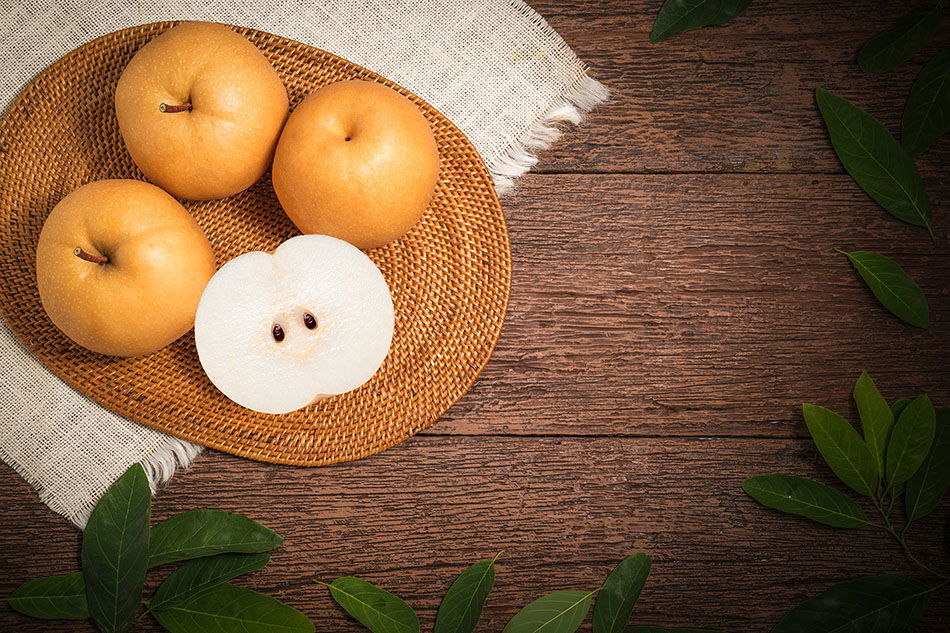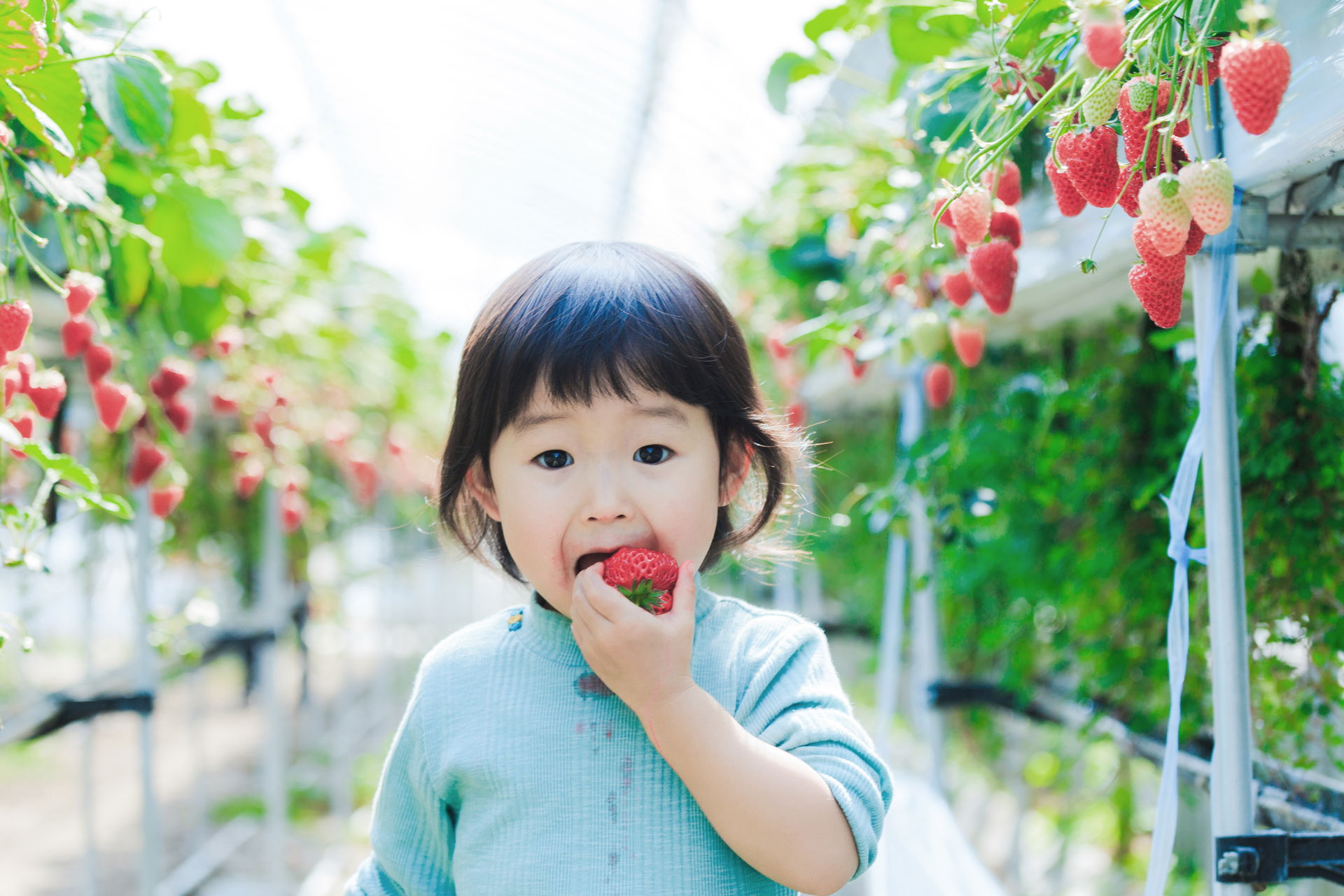Table of contents:
Think fruit is nothing special? You've clearly never had anything to do with Japanese fruit! On the one hand, there are tons of exotic fruits in Japan you've probably never even seen. But even the fruits that are in Germany as well as in Japan look different in Japan - and don't taste the same either. Japanese fruit is considered a "luxury item" and not just a normal foodstuff. So on the one hand, they are much more expensive than fruit in Germany (a proud price of 500 euros for a mango is not uncommon). On the other hand, a lot more value is placed on ensuring that Japanese fruits really taste perfect: they have to be incredibly sweet and intensely flavored, and ideally look like they came straight out of a picture book! On top of that, Japanese fruit often grows very large: for example, there are grapes that reach the size of plums! Here we have a detailed article for you on the crazy fruit prices in Japan.
What fruit is there in Japan?
In larger cities, you can of course buy almost any fruit, even though many varieties don't grow in Japan but are imported. Japan itself is home to many citrus fruits that you don't find in Europe. For example, there is a unique variation of the Japanese mandarin. But special apple and pear varieties are also typically Japanese. In addition, there are plums that are only eaten pickled, and fruit that is primarily used as a seasoning. Here is a list of the most common fruit varieties in Japan for you.
Mikan - Japanese Mandarin

This delicious little citrus fruit is very reminiscent of a mandarin or tangerine. While it originally came from China, it has been incredibly popular in Japan for several hundred years. Until 2013, the mikan was actually the most consumed fruit in Japan. In the meantime, however, bananas and apples have overtaken the mikan. The mikan is very easy to peel, and its flesh tastes sweet and delicate. Since mikans are harvested from October to January, most Japanese associate the fruit with the cold winter months. However, the mikan is also available in the summer. It is then often processed into different versions of ice cream desserts. The fruit is often simply eaten frozen, or ice cream made from the juice of the mikan. Many Japanese have a mikan tree in their own garden.
Nashi - Japanese Pears

Pears that look like apples? That's a thing! Nashi pears are large, round and crisp - and they are a traditional Japanese fruit. Although the nashi pear can be eaten with its skin on, it is usually peeled and served in wedges. Only rarely is the nashi pear eaten whole and bite by bite (like we would eat an apple). A jelly dessert is also very popular made from the popular pear. This jelly is often given as a gift. There are also different subspecies of the nashi pear. Baked goods with nashi pears, such as pear tartlets, which you can usually find in elegant bakeries, are also very popular.
Yuzu - Citrus Fruit

It may look like a wrinkled lemon, but it tastes distinctly different! The yuzu has a very unique aroma that is sweetish, but also sour and slightly bitter. It has a light flesh with many seeds. It is not usually eaten raw, but is used as an aromatic ingredient in dishes and desserts. Very popular is, for example, ponzu, a sauce that is made on the basis of yuzu. It tastes perfect with grilled fish or meat, stews and sashimi. But there is also yuzu spice, which is made from the dried, powdered peel of the yuzu and goes well with some desserts as well as with tofu, ramen and tempura. The more complex version of this is the spice Yuzukosho, which is also supplemented with chili peppers and salt. But yuzu juice is also very popular to drink - preferably in the winter with hot water. Of course, there are also various sweets with yuzu flavor: from lollipops to chips! Ultimately, the Japanese wonder fruit also plays a role in cosmetics: from room fragrances to bath salts to lip balm, the most diverse body care products are made on the basis of yuzu (or at least with yuzu aroma). Curious? Here is a separate article on the yuzu fruit:

Kaki (Japanese Persimmon)

This is one of the most popular autumn fruits in Japan! In Japan, a distinction is made between two types of kaki: those with many tannins (hachiya-gaki) and those with only a few tannins (fuyuu-gaki). The version with the few tannins is eaten in a fairly hard state - so hard that it is peeled and cut into wedges like an apple. The Hachiya-gaki, on the other hand, are only eaten very ripe and soft. They can then be spooned out of the peel or used as a topping for muesli or porridge. Sometimes they are also processed into cakes and desserts.
Ume

This type of plum (which is actually a type of apricot) should not be eaten raw - it is poisonous then. Therefore, it is either pickled in salt (umeboshi) or processed into marmalade. Pickled, fermented umeboshi is incredibly healthy and you encounter it frequently in Japanese cuisine. It is very sour and salty and therefore goes perfectly with white rice. Recently, there has also been ume pickled in honey, which is quite sweet in contrast. Umes are also processed into umeshu - plum wine. You can even make this at home quite easily!

Kyoho - Grapes

Grapes the size of German plums: that's Kyoho. They have a dark blue to dark purple color and taste grapey-sweet. Kyoho are often peeled before eating, because the skin - like the seeds - is slightly bitter. Kyoho grapes ripen in August and September, but even then they are a luxury fruit that is not exactly cheap. Many Kyoho farmers offer grape picking as an attraction.
Kabosu - Citrus Fruit

This sour citrus fruit is often mistaken for a lime - but it is more closely related to the yuzu! Kabosu juice is often processed with ginger and honey into a delicious refreshing drink. It is also used in recipes to replace vinegar. Kabosu is also very popular with fish dishes because its acidity mitigates the fishy taste.
Kinkan
Small, round and delicious: The kinkan (or kumquat) is eaten with its skin on. Its ripening season is in winter. Kinkans have a lot of important vitamins and are considered a home remedy for the prevention and treatment of colds. Kinkans taste quite sour and refreshing, but they are also very juicy. They are eaten as dried fruit, processed into marmalade and used as an ingredient for cookies.
Sudachi
This small citrus fruit also bears a certain resemblance to a wrinkled lime. It is extremely sour - so sour that it is not eaten as fruit. Instead, its juice is used as a flavoring ingredient. Lime or lemon can be replaced with sudachi. Almost all sudachis consumed in Japan come from Tokushima Prefecture - where the green fruit is the star in a variety of foods and drinks, from ice cream to alcopops to soft drinks. Sudachi is also often used as a decoration for traditional Japanese dishes such as soba, udon and nabe.
Fuji Apple

This apple is eaten all over the world, originally comes from Japan and is actually the result of crossing different American apples. Nevertheless, the Fuji apple is by far the most popular apple variety in Japan. Fuji apples can grow very large, and they taste extremely sweet and delicious. They are often eaten directly, but also processed into desserts. Candied Fuji apples are a very popular treat at fairs and festivals. The apples have a long shelf life: when refrigerated, they can easily be stored for a whole year. That's why you can buy them in Japan all year round.
Japanese Peaches
Peaches (or "Momo", as they are called in Japanese) grow incredibly large in Japan, very juicy and flavorful. Over many decades, Japanese peaches were constantly bred until they finally achieved the excellent quality they have today. Nowadays, the sugar content is often even measured before the fruits are cut open. The peach season in Japan is between July and September. Peaches have a fairly thick skin and are therefore usually peeled and cut open before serving. However, they are also used for cakes or desserts, processed into juices, lemonades and even used as a filling for sweet dumplings.
Satonishiki Cherries
Japan is known for its cherry blossoms - but most cherry trees don't bear fruit. That's why the bright red Satonishiki cherry, which ripens in early summer, is the only Japanese cherry variety. 70% of the cherry production comes exclusively from Yamagata Prefecture! However, Satonishiki cherries are considered a luxury fruit and can be incredibly expensive. They taste extremely sweet and are characterized by a bright red skin and white flesh.
Shikuwasa
This is allegedly one of the many secrets responsible for the long life expectancy of the inhabitants of Okinawa. The Shikuwasa citrus fruit is very high in vitamin C and may help prevent cancer, diabetes and liver damage. Studies suggest that it may even be used to treat Alzheimer's! This fruit is very sour and green when unripe, but turns yellow and slightly sweetish when fully ripe. It is primarily processed into juices and marmalade. Shikuwasa is used like a lemon, drizzled over grilled fish, or used in juices and desserts.
Japanese Honeydew Melon
Luxury in fruit form: that's the Japanese honeydew melon. Allegedly, Japanese melons are indeed the best in the world, but a price of around 220 euros for a piece of fruit is still a pretty proud price, isn't it? Not in Japan! The melons here are definitely the most expensive in the world. They are perfectly round, massaged by hand by the farmers to achieve maximum sweetness, and you definitely won't find any dents or blemishes on Japanese melons.


Comments